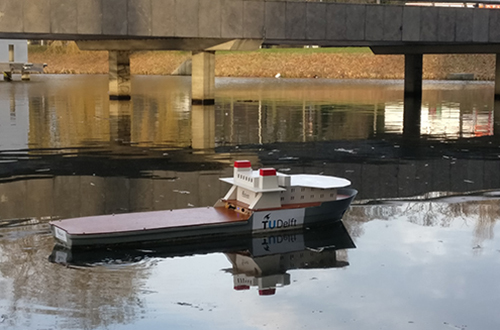
Researchers in the Netherlands are working on a complete redesign of shipping vessels that would pave the way for autonomous shipping.
The future of shipping may be more reliant on an autonomous vessel and less reliant on actual laborers.
Researchers at the Delft University of Technology in Delft, Netherlands, are studying the possibility of autonomous shipping by completely rethinking the design of ships that would replace both the captain onboard and sailors.
One of the biggest challenges is completely redesigning vessels, which were originally designed to work with the help of a crew.
“On board, people can walk between the complex machine installations, touch them, listen to what’s going on, replace a filter or make a few small adjustments,” Robert Hekkenberg, a researcher in the Marine Technology program, said in a statement. “If there is no longer a crew on board, today’s vessels will soon come to a standstill.
“This is the first time that we have really had to completely rethink the design of ships since we made the jump from wooden sailing vessels to steel steamships. Our current framework for designing ships is irrelevant for autonomous shipping. We are actually in the midst of a major system change.”
The most likely way an autonomous ship would work is with a captain that would operate the ship from a control room on dry land that is comparable to the inside of an air-traffic control tower.
The captain no longer needs to be involved with the logistical side of the business because the vessels plan their own schedules with container terminals, locks and bridges.
While a captain and sailors would no longer be required, the vessels do contact their on-shore captain if a component is broken.
One of the main reasons for a focus on autonomous shipping is a labor shortage in the shipping sector, which is arising partly due to the tremendous increase in the amount of cargo being transported by sea around the world.
“Another big advantage of unmanned shipping is that the transportation of goods becomes considerably cheaper,” Rudy Negenborn, an associate professor at TU Delft, said in a statement. “As a result, cargo will be transported by water more often than over land.
“The costs are also reduced in another way: since ships, container terminals, bridges, locks and other facilities within the harbors can automatically exchange information with each other, they can efficiently coordinate how quickly and which route the vessels need to sail to reach a specific location in order to collect and deliver their cargo,” he added.
Another benefit of autonomous shipping is safety. Hekkenberg estimated that 75 to 95 percent of all accidents at sea are at least partly caused by human error.
However, before autonomous shipping is fully implemented there are several hurdles—both technically and legally—that need to be cleared before moving forward.
Hekkenberg said the legal framework will be adjusted by 2030 and researchers are working to solve any technical issues.
“On the technical side, there is still a lot to do but the concept is really gaining momentum,” he said in a statement. “For example, Rolls-Royce, a major player in the shipping industry, has unshakeable confidence in the future of autonomous shipping. We are expecting the first pilot projects to get underway soon.
“The important thing to remember is that it’s not a question of all or nothing,” he added. “We can automate parts of the process step by step, just like automation in cars progressed. A key intermediate step towards real autonomous shipping is, for example, unmanned shipping; so there is no crew on board, but humans are still in control from dry land.”




